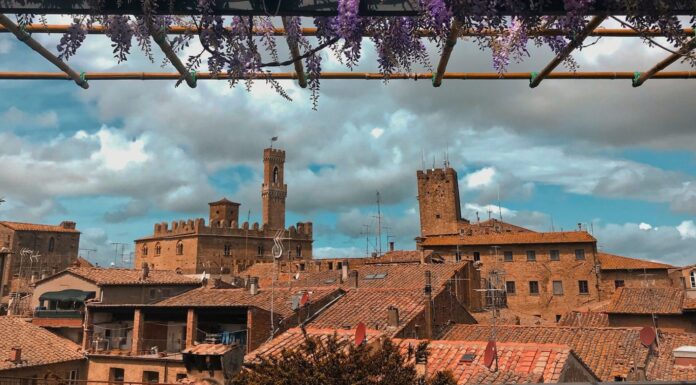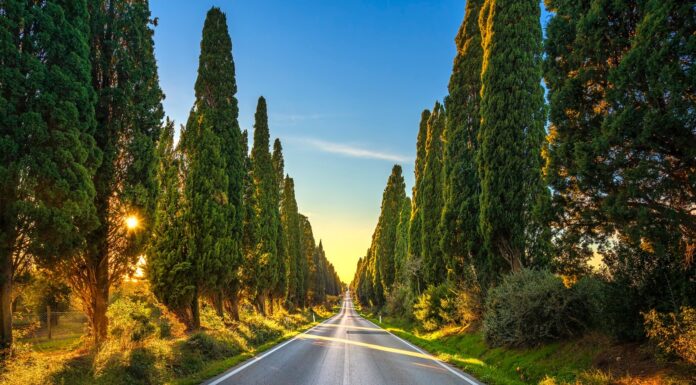Upon my first visit, I knew that I wanted to see some of the famous statues in Italy. Some of the oldest statues in Italy date back to the 2nd century BC, so you can unpack a lot of history along with seeing some of the most famous statues in the world. Italy is known for its art and beauty.
When you look at the sculptures in Italy, you see why this country has had so much influence on the development of Western art. The sculpture was one of the important elements of art during the Italian Renaissance, but it has always been an important part of the history of this country.
If you’d like to learn more about the famous statues in Italy, keep reading as I will cover that, and I will tell you about the five most unusual and fun sculptures in the country.
20 Famous Statues in Italy
Italy, a country synonymous with unparalleled art and history, is home to some of the world’s most famous statues, each telling a unique story of its era and craftsmanship. Here are 20 of those remarkable sculptures that continue to captivate and inspire:
1. The Statue of David – Florence
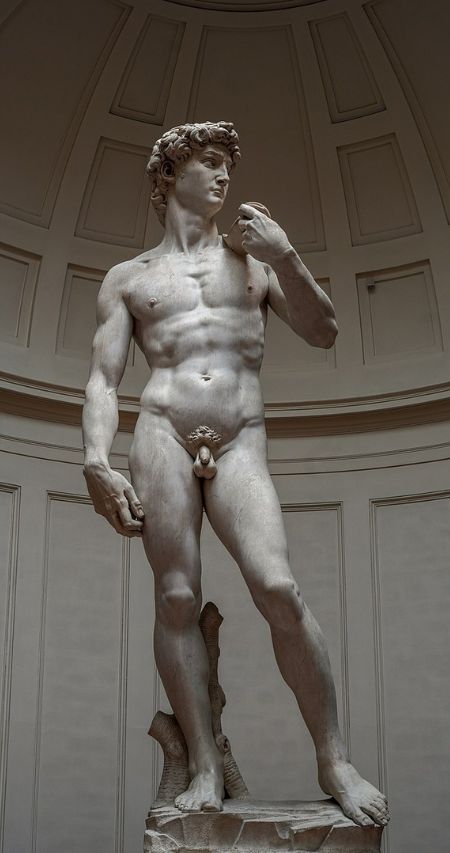
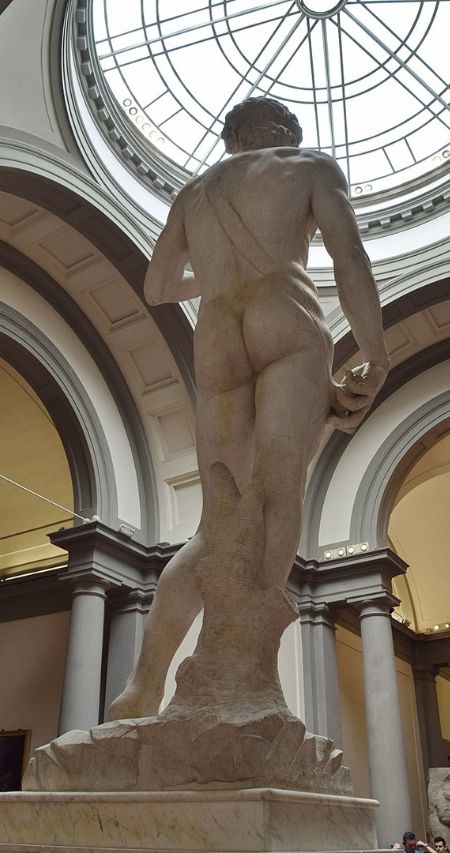
Artist: Michelangelo
Year: 1501-1504
Medium: Carrara marble
Location: Galleria dell’Accademia, Florence
Roughly the size of a two-story building (17 feet, 6 tons), two other previous sculptors deemed the marble block unworkable. In the masterful hands of Michelangelo, he created one of the most celebrated sculptures in all of Italy. From 1501 to 1504, Michelangelo would work to portray the biblical story of David before his defeat of Goliath.
50 years before Michelangelo worked on it, famous Renaissance artist Donatello gave up the marble block as too flawed and abandoned it for a different project. When looking at this as one of the statues in Italy, pay close attention to the exaggerated size of David’s right hand. Most art experts believe it is a secret reference to the nickname of David, “Strong of hand.”
2. Apollo and Daphne – Rome

Artist: Gian Lorenzo Bernini
Year: 1622-1625
Medium: Marble
Location: Galleria Borghese, Rome
Pulling from Greek mythology, this is one of the famous statues in Italy that captures the exact moment that Daphne turns into a tree. In the story, Apollo, god of music and poetry, was madly in love with the nymph Daphne, but she was a woman sworn to remain a virgin. Taking a closer look at the statue, you will see Daphne’s hands turn into leaves. Her toes, meanwhile, turn into roots, and her torso begins to turn into tree bark.
This masterpiece resides in the Galleria Borghese in Rome. It’s a vivid portrayal of desire and despair, immortalizing the tragic beauty of unrequited love. Bernini’s unparalleled skill in capturing the fleeting moment of transformation is evident, making this statue a profound symbol of the Baroque art movement’s dynamism and emotional depth.
3. Perseus with the Head of Medusa – Florence
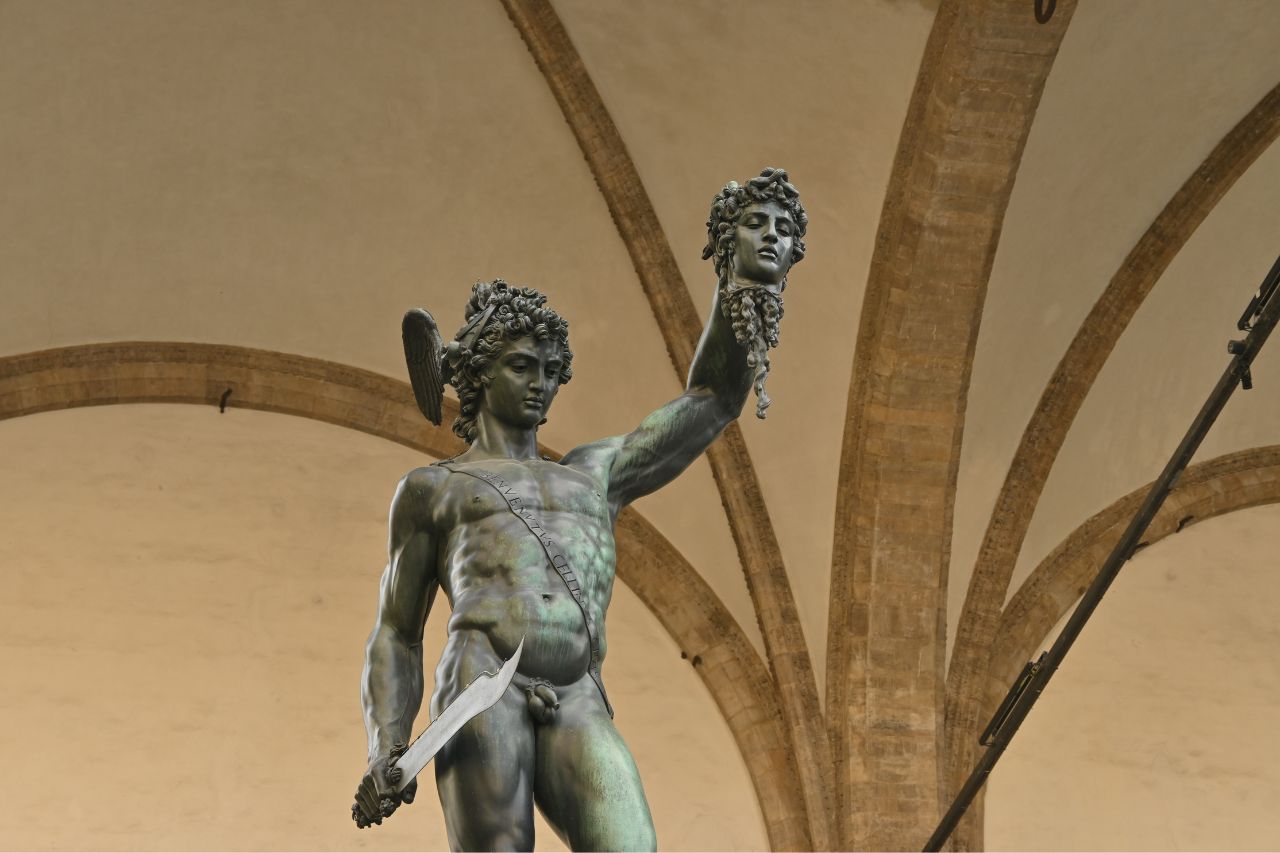
Artist: Benvenuto Cellini
Year: 1545-1554
Medium: Bronze
Location: Loggia dei Lanzi in the Piazza della Signoria, Florence
One of the sculptures in Italy that I found more interesting, Perseus with the Head of Medusa depicts the love story of Perseus and Andromeda. Despite its beauty, it could rank as one of the most overlooked statues in the world. Most art historians would rank it as one of the masterpieces of 16th-century Florentine art. Even Michelangelo would describe Cellini as a genius goldsmith.
This bronze statue by Benvenuto Cellini stands as a testament to the skill and creativity of the Renaissance. The statue not only tells a tale of heroism and love but also showcases Cellini’s mastery over bronze, capturing intricate details and dynamic motion. The way Perseus holds Medusa’s head triumphantly, yet with a calm demeanor, reflects the complex emotions surrounding victory and the consequences of actions, making it a thought-provoking piece in the midst of Florence’s rich artistic landscape.
4. Pietà – Rome
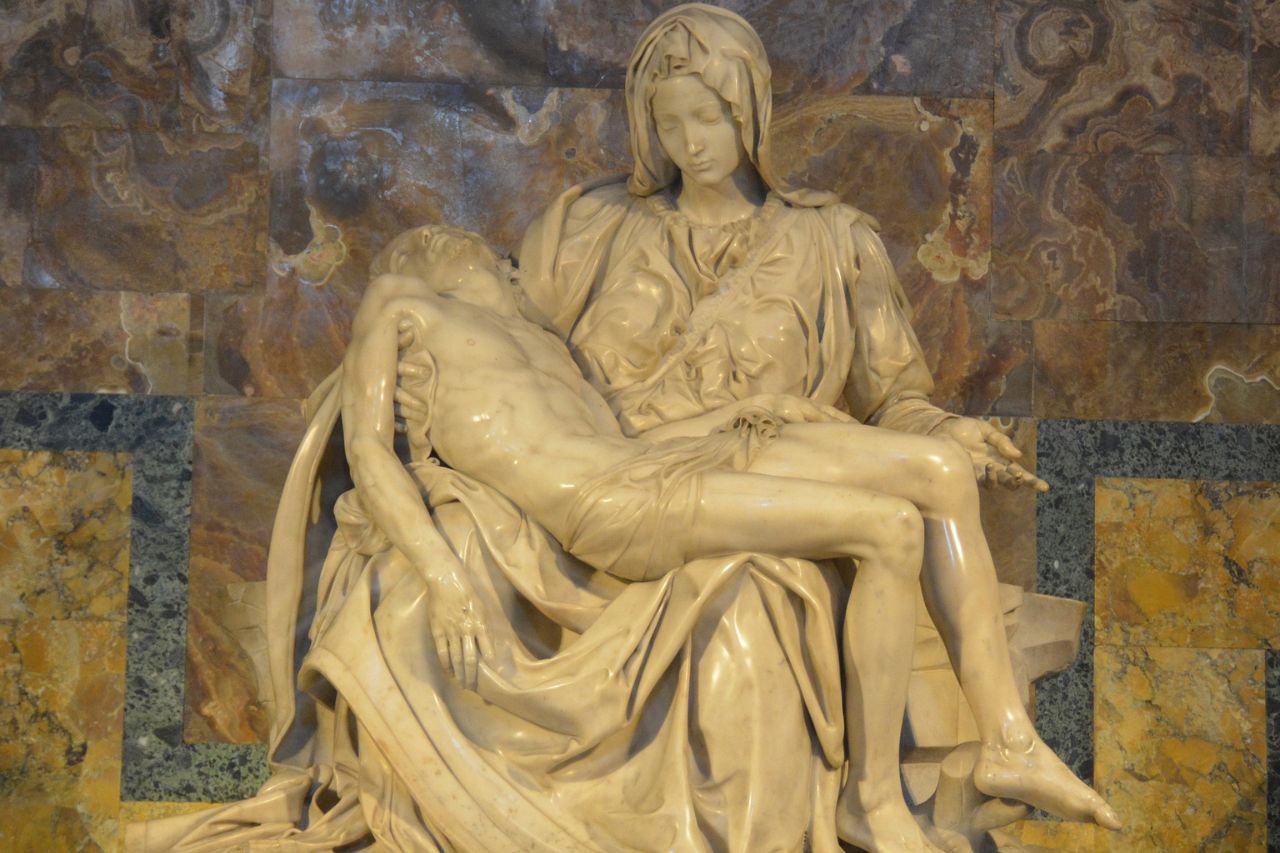
Artist: Michelangelo
Year: 1498-1499
Medium: Marble
Location: St. Peter’s Basilica, Rome
Another one of the masterpiece statues in Italy that Michelangelo sculpted, Pietà means “Pity” or “Compassion.” It represents the great sorrow of the Blessed Virgin Mary as she holds the dead body of Jesus in her lap. The Pietà is the only artwork of Michelangelo that shows his signed name on it. He added his name after a spectator saw the work and attributed it to another artist. Michelangelo spent most of his life in Florence, but he would create this work during a short 5-year period that he spent in Rome when Cardinal de Bilheres commissioned him.
This stunning sculpture is celebrated for its extraordinary detail and emotional power. Michelangelo’s ability to convey the Virgin Mary’s grief and the serene acceptance of her fate is unparalleled, making the Pietà not just a religious symbol but a universal expression of maternal love and loss. The finesse in the carving of the delicate folds of Mary’s robe and the peaceful expression on Jesus’s face underscore Michelangelo’s unmatched skill and the deep empathy he felt for his subject.
Read more: Central Italy Cities – Travel Guide to 17 Fabulous Gems
5. Veiled Christ – Naples

Artist: Giuseppe Sanmartino
Year: 1753
Medium: Marble
Location: Cappella Sansevero, Naples
The Veiled Christ depicts Jesus of Nazareth covered with a transparent shroud. The artist was so skilled that he used the same block for the shroud as he did the bodily form. Considered one of the finest statues ever made, you can feel all the pain and piercing of the body in the Veiled Christ statue.
This remarkable work is located in the Sansevero Chapel in Naples and is the creation of Giuseppe Sanmartino, a masterpiece of Italian sculpture. The illusion of a sheer veil over Christ’s body demonstrates Sanmartino’s virtuosic talent in marble, making the statue a focal point for both art lovers and spiritual seekers. The intricate details of the sculpture, such as the visible wounds of Christ and the delicate texture of the veil, evoke a profound sense of realism and emotion, inviting viewers to contemplate the depth of Christ’s sacrifice and the artist’s ingenuity.
6. Riace Bronzes – Reggio Calabria
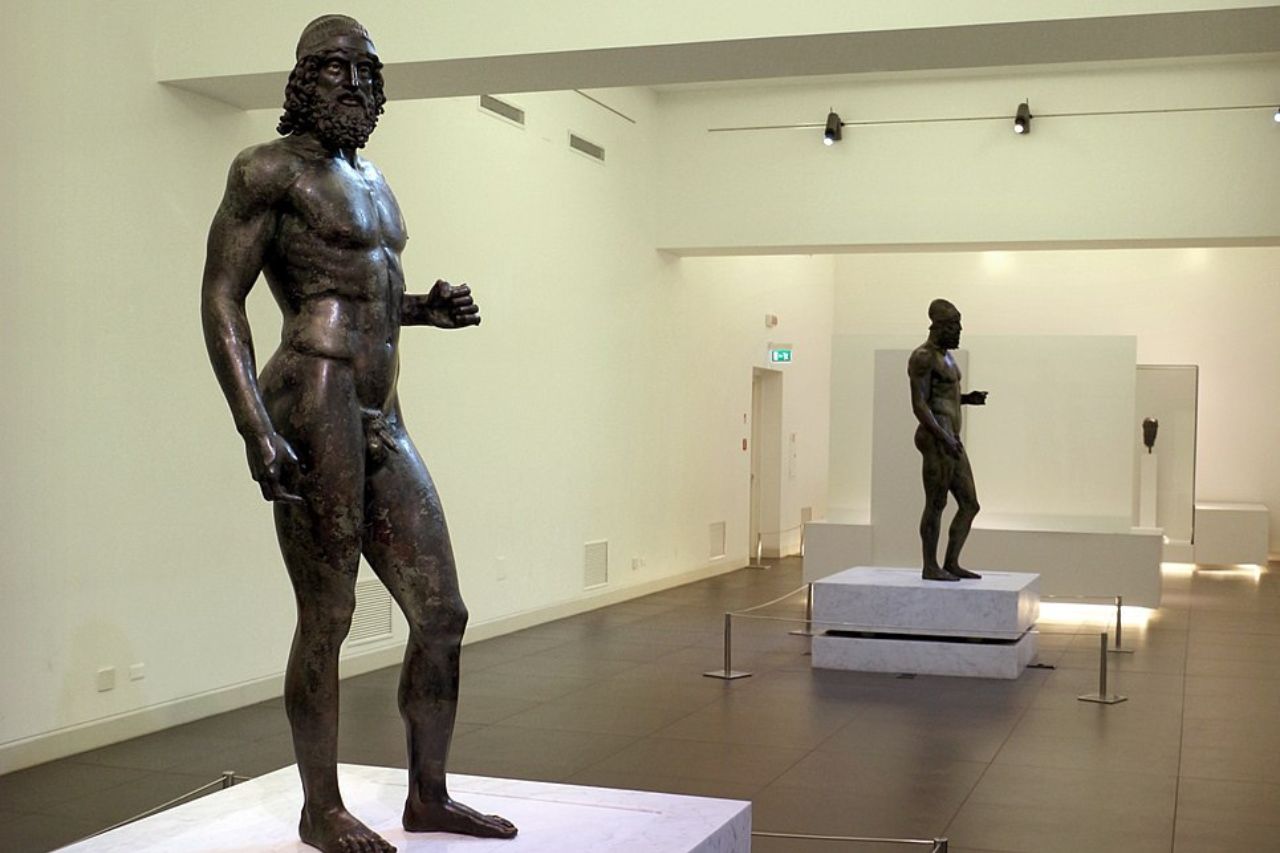
Artist: Unknown
Year: 1753
Medium: Bronze
Location: National Museum of Magna Graecia
Also known as the Riace Warriors, most art historians believe that this pair of sculptures originated in Greece in the mid-5th century BCE. The statues depict life-size naked statues of Greek bearded warriors. Most believe that the Riace Bronzes spent more than 2,000 years submerged beneath the Ionian Sea before an amateur scuba diver from Rome, Stefano Marriottini, would discover the statues underwater on August 16, 1972. These are Greek statues in Italy because they discovered them off the coast of Riace Marina, Italy.
Today, these magnificent bronzes are displayed in the National Museum of Magna Graecia in Reggio Calabria, captivating visitors with their remarkable preservation and exquisite craftsmanship. The discovery of the Riace Bronzes was a sensational event that provided invaluable insight into ancient Greek art and technology. Their detailed anatomical precision, poised expressions, and dynamic poses reflect the advanced metalworking skills and artistic vision of the ancient Greeks, making the Riace Bronzes a pivotal link to understanding the classical world’s legacy.
7. Madonnina – Milan

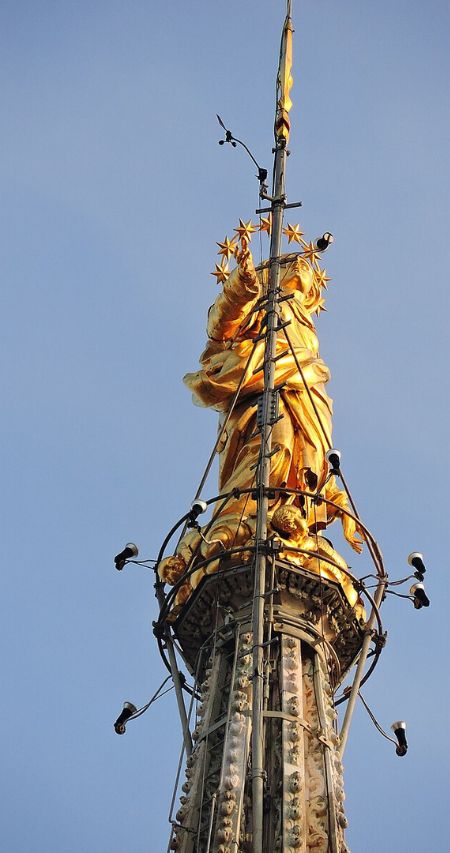
Artist: Giuseppe Perego and Giuseppe Bini
Year: 1774
Medium: Statuary Bronze
Location: Milan Cathedral, Milan
Sitting atop the Milan Cathedral, the Madonnina has become a symbol of the city. In fact, it became so much of a symbol that according to tradition, no building can sit taller than the Madonnina. Torre Valasca and Torre Branca Tower weren’t approved to exceed 108.5 meters. The sculptor Giuseppe Perego and the goldsmith Giuseppe Bini created the statue.
This revered statue, coated in sheets of gold exemplifies the city’s devotion to its patroness. The Madonnina, a striking figure of the Virgin Mary, radiates against the backdrop of Milan’s evolving skyline, embodying the blend of historic reverence and modern innovation that characterizes the city. Its presence is a constant reminder of Milan’s rich cultural and religious heritage, serving as a beacon of protection and inspiration to both residents and visitors alike. The tradition of not surpassing the Madonnina in height reflects Milan’s deep respect for its past, even as the city moves boldly into the future.
8. Juliet Statue – Verona
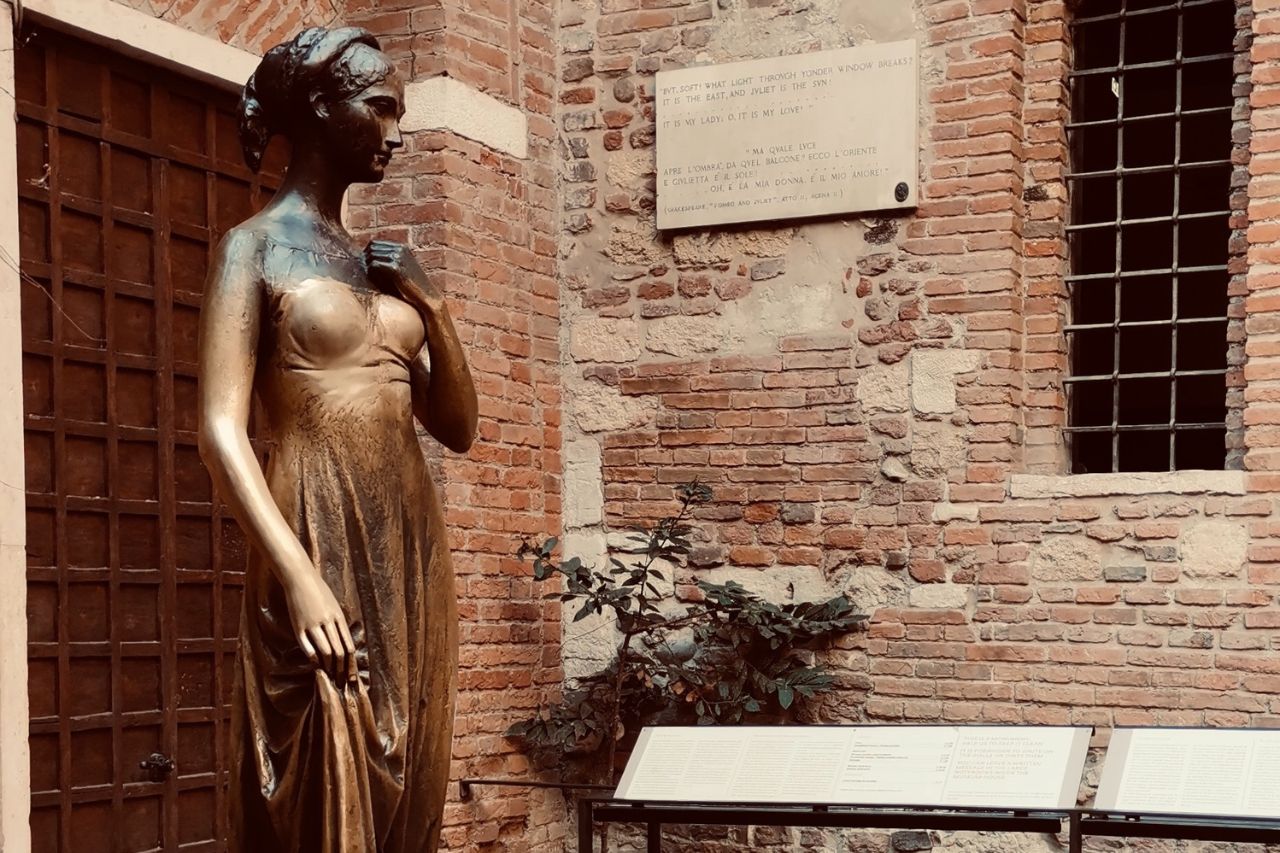
Artist: Nereo Costantini
Year: 1969-1972
Medium: Bronze
Location: Casa di Giulietta, Verona
Originally, they positioned the statue in the courtyard of Juliet’s house, and they once considered it good luck to touch the right breast of Juliet. That fact eventually forced them to move the real statue to Giuletta’s house museum and a copy of the statue now sits in the courtyard.
This iconic statue has become a pilgrimage site for lovers from around the world, drawn to the romantic legacy of Shakespeare’s tragic heroine. The tradition of touching the statue for luck in love highlights the enduring influence of literature and romance in human culture. Visitors to Verona now encounter the replica in Juliet’s courtyard, yet the act remains a powerful symbol of hope and love, connecting the past with the present. This enduring custom underscores the timeless appeal of Shakespeare’s work and the city of Verona’s embrace of its role in the legendary tale of Romeo and Juliet.
9. Moses – Rome

Artist: Michelangelo
Year: 1513-1515
Medium: Marble
Location: Basilica of San Pietro in Vincoli
One of the best sculptures in Italy, you can look at this sculpture and feel the biblical Moses as a living, breathing figure who represents the might and will of God. Michelangelo made this sculpture to become the tomb of Pope Julius II. In the sculpture, you will see the prophet Moses sitting between decorated marble columns and a marble chair.
Located in the Church of San Pietro in Vincoli in Rome, the statue of Moses is famed for its vivid realism and emotional intensity. Michelangelo’s skill in depicting the human form and his ability to convey deep spiritual themes are evident in this masterpiece. The figure of Moses, with detailed flowing beard and the tablets of the law, radiates authority and contemplation.
10. The Rape of the Sabine Women – Florence

Artist: Giambologna
Year: 1579-1583
Medium: Marble
Location: Loggia dei Lanzi, Florence
Sculpted by the Flemish artist Giambologna, this sculpture depicts one of the most legendary events in Roman history, which is what makes it one of the statues in Italy worth seeing. Hoping to secure wives for his men, Romulus, along with his twin brother Remus, invited the Sabines to the celebrations. As the Sabines came to the celebratory games, the Romans went over and stole the women, which is what the statue shows.
This dynamic sculpture is located in the Loggia dei Lanzi in Piazza della Signoria in Florence. Giambologna’s work is celebrated for its technical excellence and the way it captures the chaos and intensity of the moment in a single block of marble. The statue’s composition, with its spiraling figures, draws viewers around it, offering different perspectives and insights from each angle.
Read more: Statues in Rome – 23 Must-see Pieces in the Eternal City
11. Fountain of Neptune – Bologna
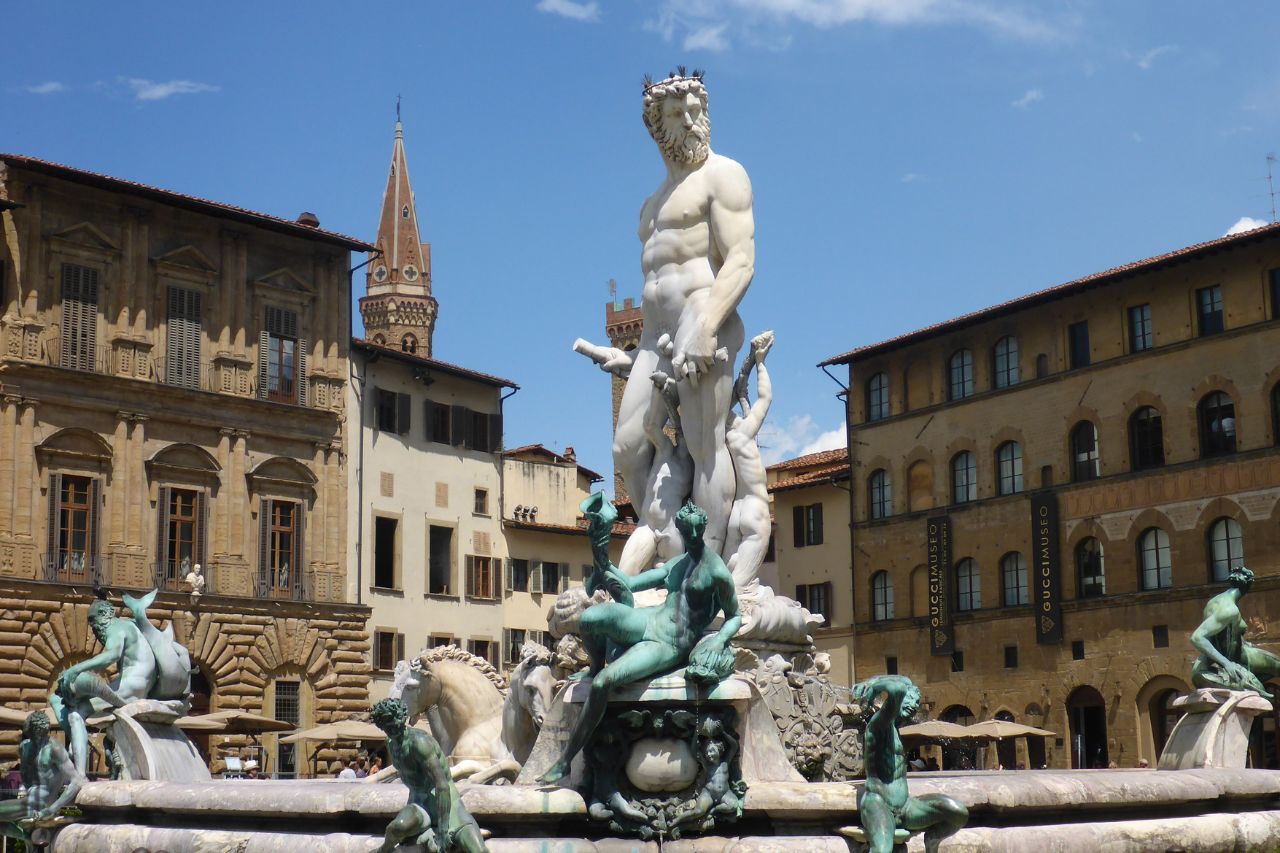
Artist: Giambologna, Tommaso Laureti
Year: 1563-1566
Medium: Marble and Bronze
Location: Piazza Maggiore, Bologna
Interestingly enough, the Fountain of Neptune represents the pope. In order to assert his dominance over the city of Bologna, Pope Pio IV created this statue and just as Nepture controls the waters, the pope controls the people. Designed by the architect Giambologna in the 16th century, the fountain stands as a grand symbol of power and divine authority in the Piazza del Nettuno. The majestic figure of Neptune, with his trident commanding the water around him, serves as a metaphor for the Pope’s control over his domain.
This impressive work of art not only reflects the political aspirations of its time but also showcases the artistic brilliance of the Renaissance period. The intricate details of the sculpture and the surrounding figures, which include cherubs and sea nymphs, add layers of meaning and beauty, making the Fountain of Neptune a focal point for both the history and the artistry that define Bologna’s cultural heritage.
12. David by Donatello – Florence
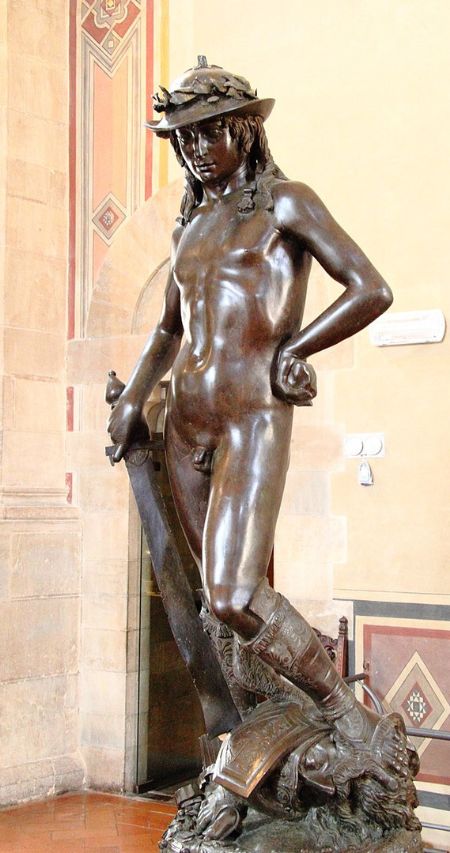

Artist: Donatello
Year: 1430-1440
Medium: Bronze
Location: Bargello Museum, Florence
The most famous work of Donatello, David consists of two statues that depict the biblical story of David and Goliath. It shows David with his foot on the head of Goliath after the defeat. In the first statue, David is fully clothed, but in the second one, he’s depicted as naked with a sword.
Donatello’s mastery in bronze and marble brings a delicate realism and an introspective quality to David, reflecting the Renaissance’s humanist ideals. The contrast between the armored and nude versions of David highlights the artist’s exploration of human vulnerability and divine protection. These works not only capture the triumph of David over Goliath but also symbolize the strength and beauty of the human spirit, embodying the artistic and philosophical advancements of the era.
13. Equestrian Statue of Marcus Aurelius – Rome
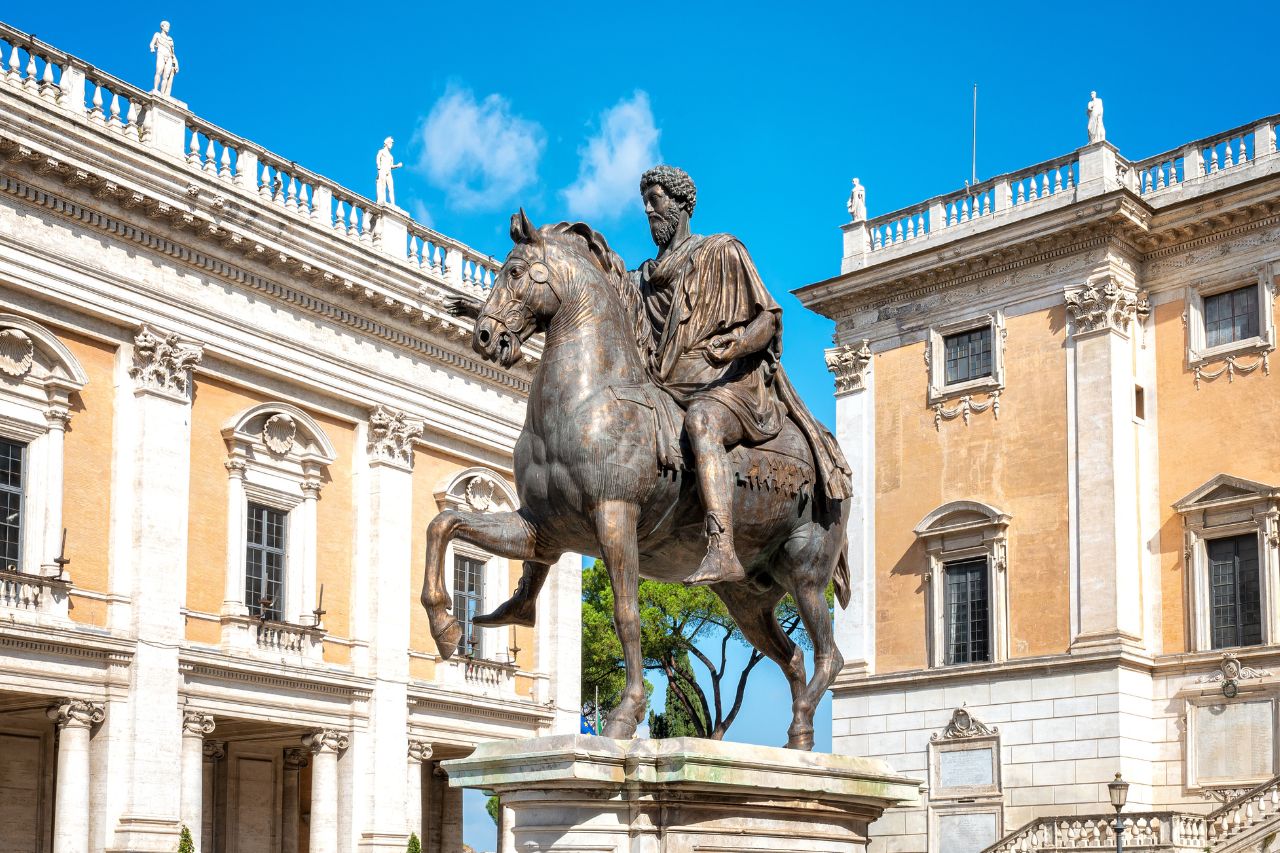
Artist: Tomaso Cuccione
Year: 161 AD – 180 AD
Medium: Bronze, originally gilded
Location: Piazza del Campidoglio, Rome
Showing the famous philosopher king on horseback, you see a Roman emperor as powerful from the military standpoint, but he was an emperor who much preferred peace, intellectual pursuit, and Stoic philosophy. This statue has importance because of its influence on equestrian statues from the Renaissance onward into the modern era.
Preserved in the Capitoline Museums, this bronze statue is one of the few surviving ancient Roman equestrian sculptures, serving as a rare link to the world of antiquity. Its remarkable preservation over the centuries allowed it to inspire countless artists during the Renaissance, who admired its majestic portrayal of leadership and wisdom. The statue’s presence, capturing both the physical might and the philosophical depth of Marcus Aurelius, embodies the complexities of power and governance.
14. Elephant Fountain – Catania
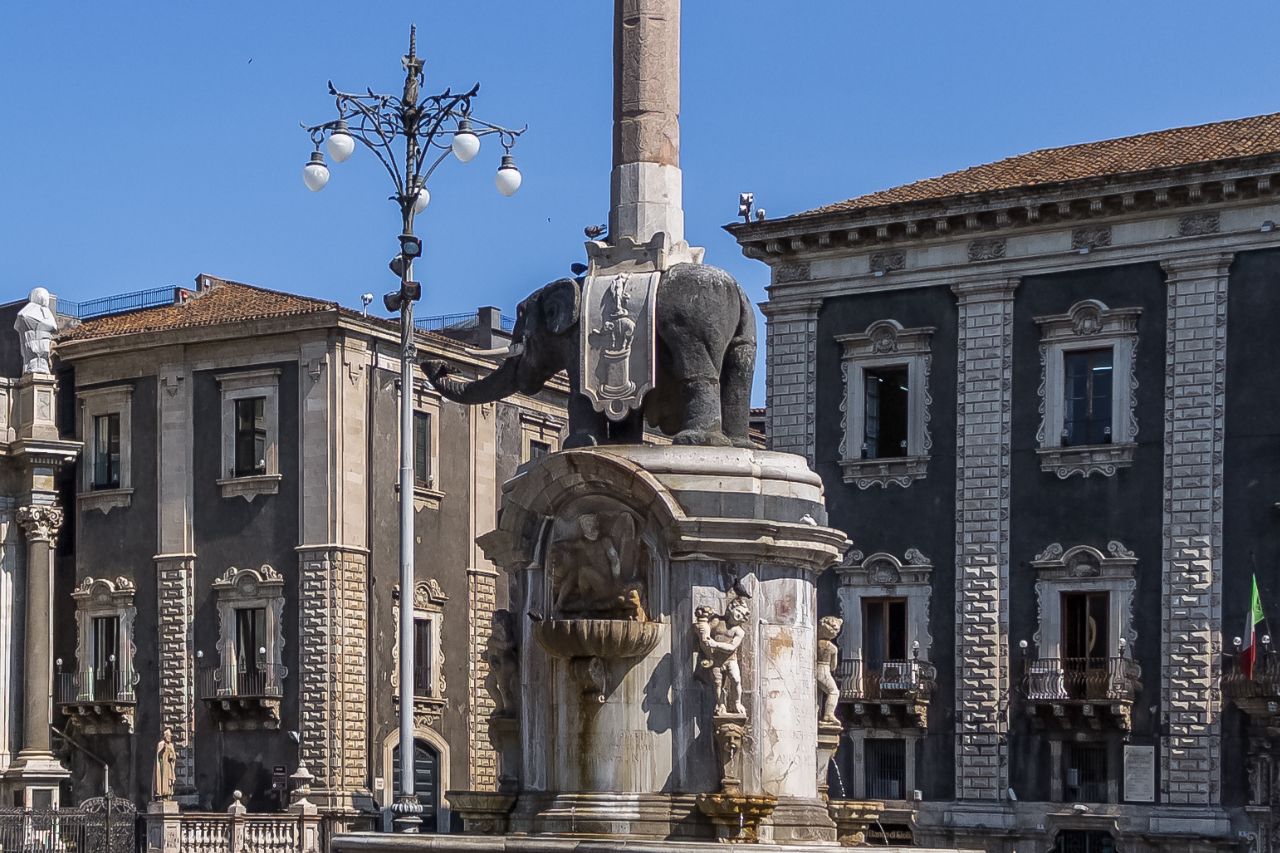
Artist: Giovanni Battista Vaccarini
Year: 1735-1737
Medium: Black volcanic rock
Location: Piazza del Duomo, Catania
Thought of as a symbol of the city, this is one of the statues in Italy that shares more similarities to an Asian statue. Catania, in the past, had connections with the East. The local residents of the city call this statue “Liotru’s fountain.” Liotru comes from a local story called Eliodor, who was a Byzantine magician who would ride an elephant in the city. Giovanni Battista Vaccarini felt inspired to create this elephant when he saw Bernini’s Minerva Elephant. Above the elephant, you will see an Egyptian obelisk.
The combination of the elephant, a creature not native to Italy, with an ancient Egyptian obelisk speaks to Catania’s historical trade routes and its openness to diverse influences. This statue, embodying strength and wisdom, has become a beloved landmark, symbolizing the resilience and complex history of Catania and its people, bridging the past with the present in the heart of the city.
15. The Boxer at Rest – Rome

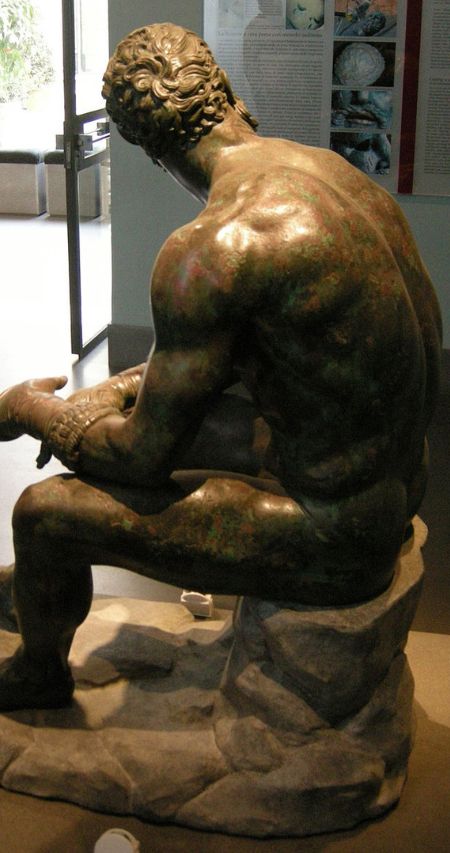
Artist: Lysippus or Apollonius
Year: 323 BC – 31 BC
Medium: Bronze inlaid with copper
Location: Palazzo Massimo alle Terme, Rome
In 1885, archaeologists excavated the Boxer at Rest from the south slope of Quirinal Hill at the Baths of Constantine. Dating back to the Hellenistic period, bronze statues were common during this period. Some believe that Lysippos, the Athenian, was the sculptor of this statue. Lysippos was the personal sculptor of Alexander the Great. Especially if you’d like to see an ancient masterpiece, the Boxer at Rest shows a muscled torso with a scarred and bruised face.
Now displayed in the National Roman Museum, the Boxer at Rest is an exceptional example of ancient Greek sculpture that has captivated viewers for centuries with its incredible realism and emotional depth. The statue’s detailed depiction of the boxer’s weary yet resilient expression and his battle-worn body provides a profound insight into the physical and psychological strains of ancient athletes.
16. The Colossus of Villa Demidoff – Vaglia, Florence

Artist: Giambologna
Year: 1579-1580
Medium: Stone
Location: Villa Demidoff, Vaglia
They completed most of this park in the 16th century, and these are some of the statues in Italy that you don’t want to miss if you love the unusual. Originally funded by Francesco I de’Medici, this area is stunning with many natural caves to explore. The Appennine Colossus would prove the main focal point of the villa. They abandoned this park in the 1800s, and unfortunately, they removed some of the statues. Luckily, the Grand Duke of Tuscany, Ferdinand III, felt so awestruck at the beauty of the park that he decided to remove the ruins of the villa and focus completely on the park.
17. Guidarello Guidarelli Funeral Monument – Ravenna
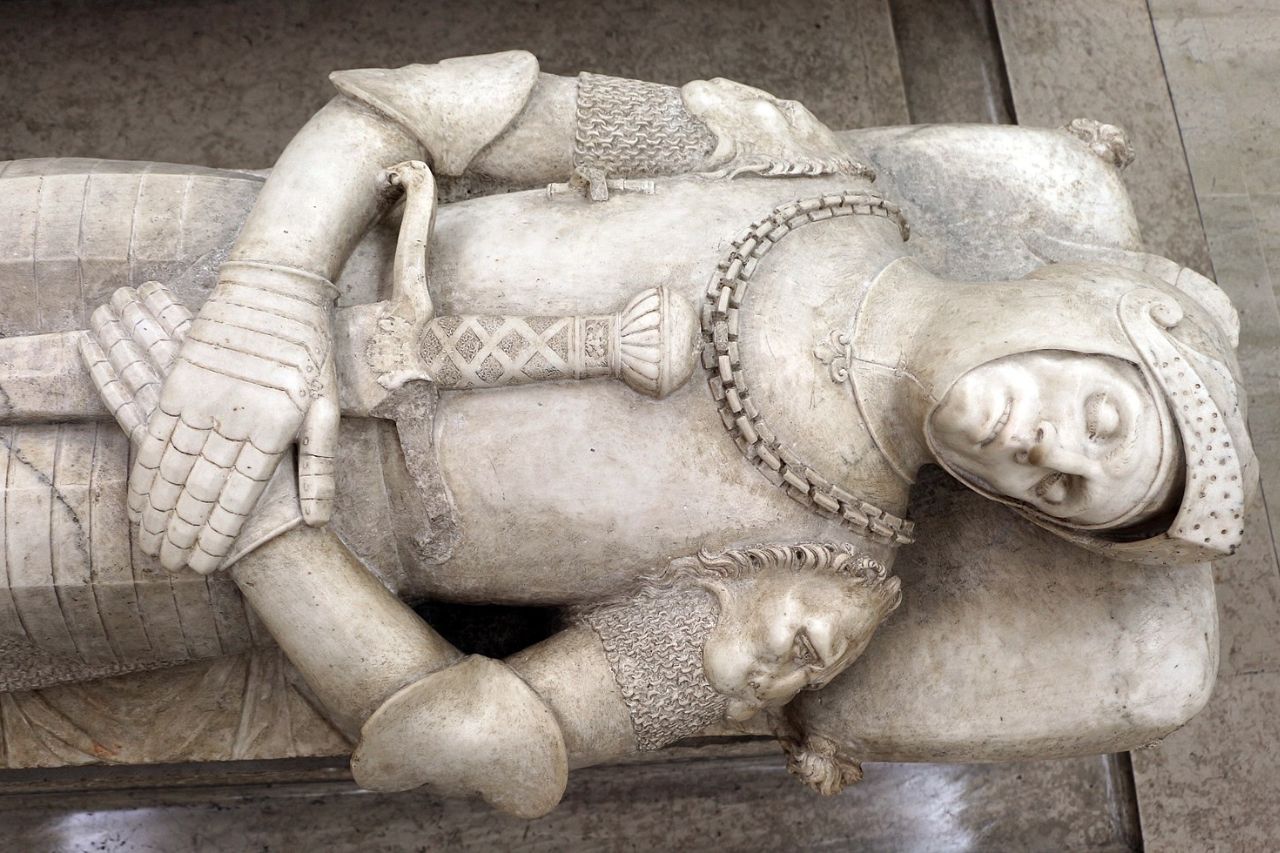
Artist: Tullio Lombardo
Year: 1499-1500
Medium: Marble
Location: Ravenna Art Museum, Ravenna
According to legend, any woman who kisses the Guidarello Guidarelli statue would become married within the year—some estimate that more than a million hopeful women kissed the statue. No one knows the exact artist, but they believe that Tullio Lombardo most likely created it. You see a strong contrast between the armor and the realistic face of the statue.
This enchanting monument, located in the Museo d’Arte della città di Ravenna, captivates visitors with its poignant beauty and the romantic legend that surrounds it. The lifelike depiction of Guidarello Guidarelli, a mercenary captain of the Renaissance, in repose, invites a moment of reflection on the themes of love and destiny. The intricate carving of the armor juxtaposed with the peaceful expression of Guidarelli’s face highlights the dual nature of a warrior’s life—valor in battle and tranquility in death.
18. The Statues of the Park of the Monsters – Bomarzo Viterbo

Artist: Unknown
Year: 1547
Medium: Stone
Location: Località Giardino, Bomarzo
This Park of the Monsters inspired Salvador Dali and countless other artists over the years. Like the Colossus of Villa Demidoff, it sat abandoned because they viewed it as a monstrosity rather than a work of art. However, it holds some of the more interesting statues in Italy that you can see. Especially for the time in the 16th century, statues like this weren’t common, and it was one of the reasons that when the heirs took the park from Pier Francesco “Vicino” Orsini, they left it in ruins.
19. Middle Finger Statue – Milan

Artist: Maurizio Cattelan
Year: 2010
Medium: Resin
Location: Piazza Affari, Milan
Commonly referred to as Il Dito, in Italian, that stands for “The finger.” The actual name for the statue is called “L.O.V.E.”, but few people ever call it by its official name. Maurizio Cattelan meant the statue as a way of sending a straightforward message to the bankers of Italy. In fact, the statue reflects Cattelan’s overall attitude of being a rebel. The statue stands 36 feet tall.
Positioned in front of the Milan Stock Exchange, this provocative piece of contemporary art has sparked much debate and interpretation since its unveiling. Cattelan’s work is known for its boldness and irony, and the L.O.V.E. statue is no exception. By using a universal symbol of defiance, Cattelan challenges viewers to reflect on the power dynamics within society and the financial system. The statue’s towering presence in such a significant location underscores the artist’s critique of authority and capitalism.
20. Talking Statues of Rome
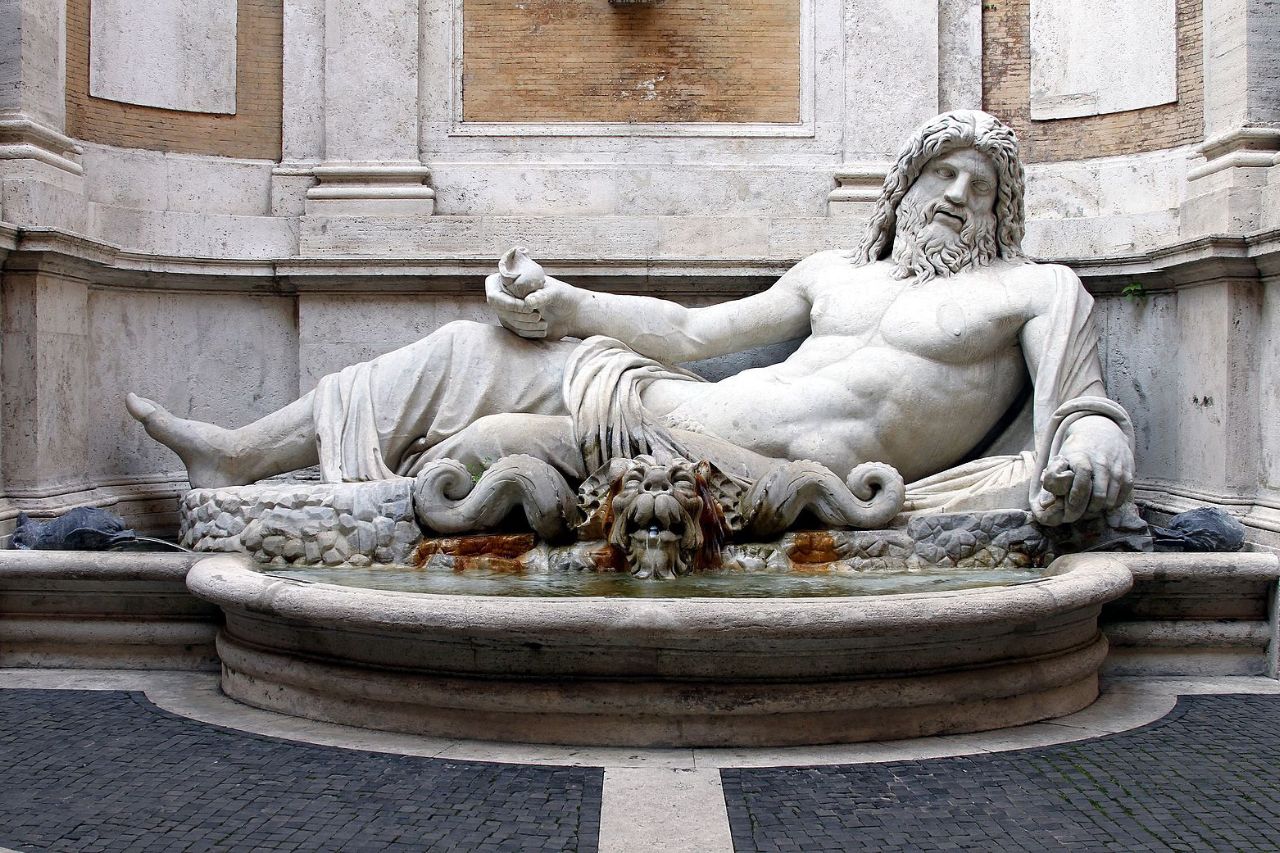
Artist: Unknown
Year: 3rd century BCE
Medium: Marble
Location: Capitoline Museums, Rome
Consisting of six statues, their curious name immediately invites questions. Found in 1501, most believe the statues as being of ancient Roman origin. The reason they’re called the talking statues of Rome is because the statues became a point in the city for public discourse. People would post anonymous political messages near them as a way to fight the oppressive power of the pope. During that time, leaving such messages could risk severe consequences. Even today, the statues continue to “talk.” In 2011, someone wrote, “Italy is not a brothel.” It’s one of the statues in Italy worth seeing especially if you love and value free speech.
These statues, including the famous Pasquino near Piazza Navona, have served as a voice for the voiceless throughout history, offering a unique form of resistance and commentary on societal and political issues. Their enduring legacy as a platform for anonymous expression highlights the human desire for freedom of speech and the ingenious methods people will employ to ensure their voices are heard.
FAQs about the Statues in Italy
Italy’s rich tapestry of art and history is vividly captured in its statues, which range from ancient masterpieces to Renaissance marvels. Here are some frequently asked questions about these iconic sculptures:
What Famous Sculpture is in Italy?
Italy is home to some of the world’s most famous statues, with Michelangelo’s David being one of the most iconic. This masterpiece of Renaissance sculpture, representing the biblical hero David, is located in the Accademia Gallery in Florence.
How Old are the Statues in Italy?
The statues in Italy span a wide range of periods, from ancient Roman and Greek times to the Renaissance and beyond. For example, Michelangelo’s David was sculpted between 1501 and 1504, making it over 500 years old. Ancient Roman and Greek statues found in Italy can be over 2,000 years old.
Is there a Statue of Jesus in Italy?
Yes, there are many statues of Jesus in Italy, one of the most notable being the Pietà by Michelangelo. This exquisite sculpture, located in St. Peter’s Basilica in Vatican City, depicts the Virgin Mary holding the dead body of Jesus Christ after his crucifixion.
Conclusion
Italy’s statues transcend mere artistry, embodying narratives of history, spirituality, and human achievement. The iconic David, the moving Pietà, and countless others tell stories of divine inspiration and unparalleled craftsmanship. These timeless masterpieces, spanning from ancient eras to the Renaissance, continue to awe and inspire global visitors, encapsulating Italy’s enduring legacy as a cradle of civilization. Each piece, whether depicting gods, heroes, or mortals, weaves into the fabric of Italian culture, showcasing the nation’s profound impact on the world of art.


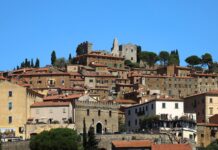
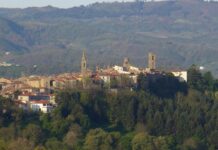
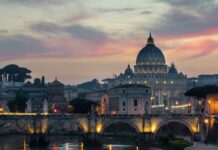






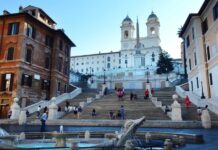


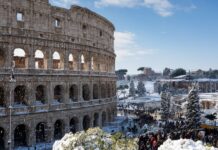
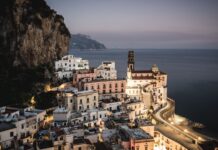
![Statues-in-Italy[1] Statues in Italy](https://italytravelsecrets.com/wp-content/uploads/2023/07/Statues-in-Italy1-1068x542.jpg)
